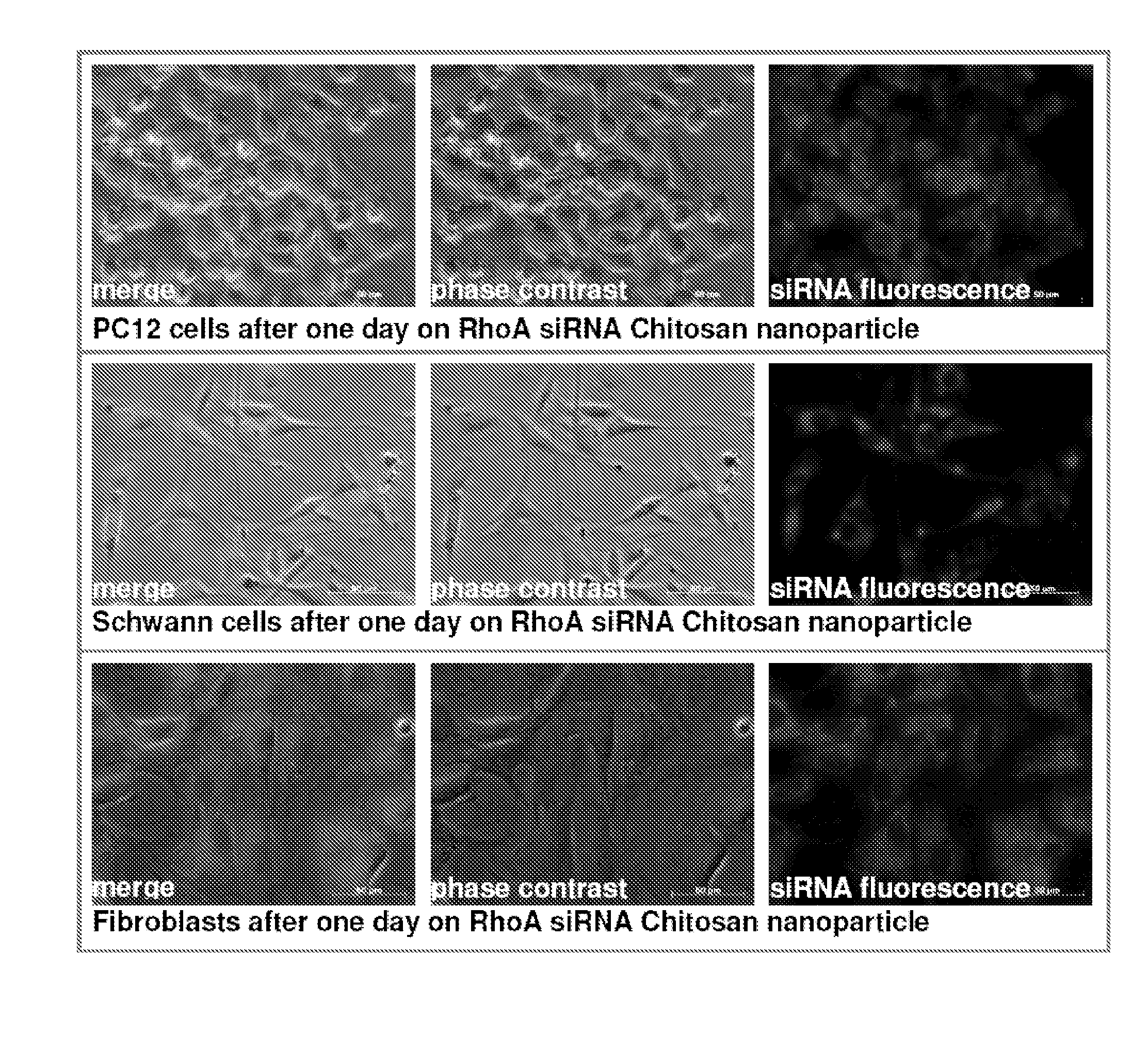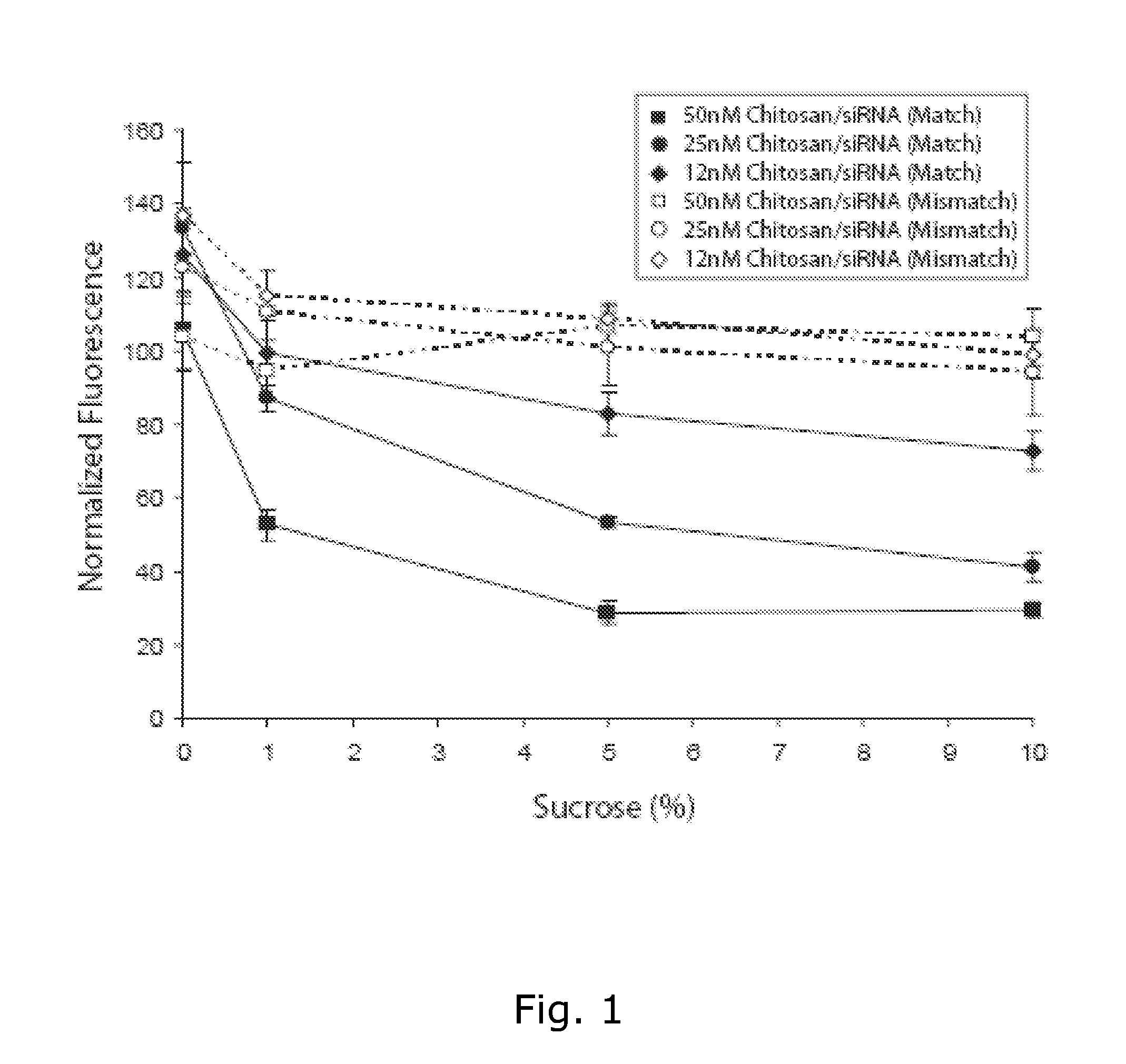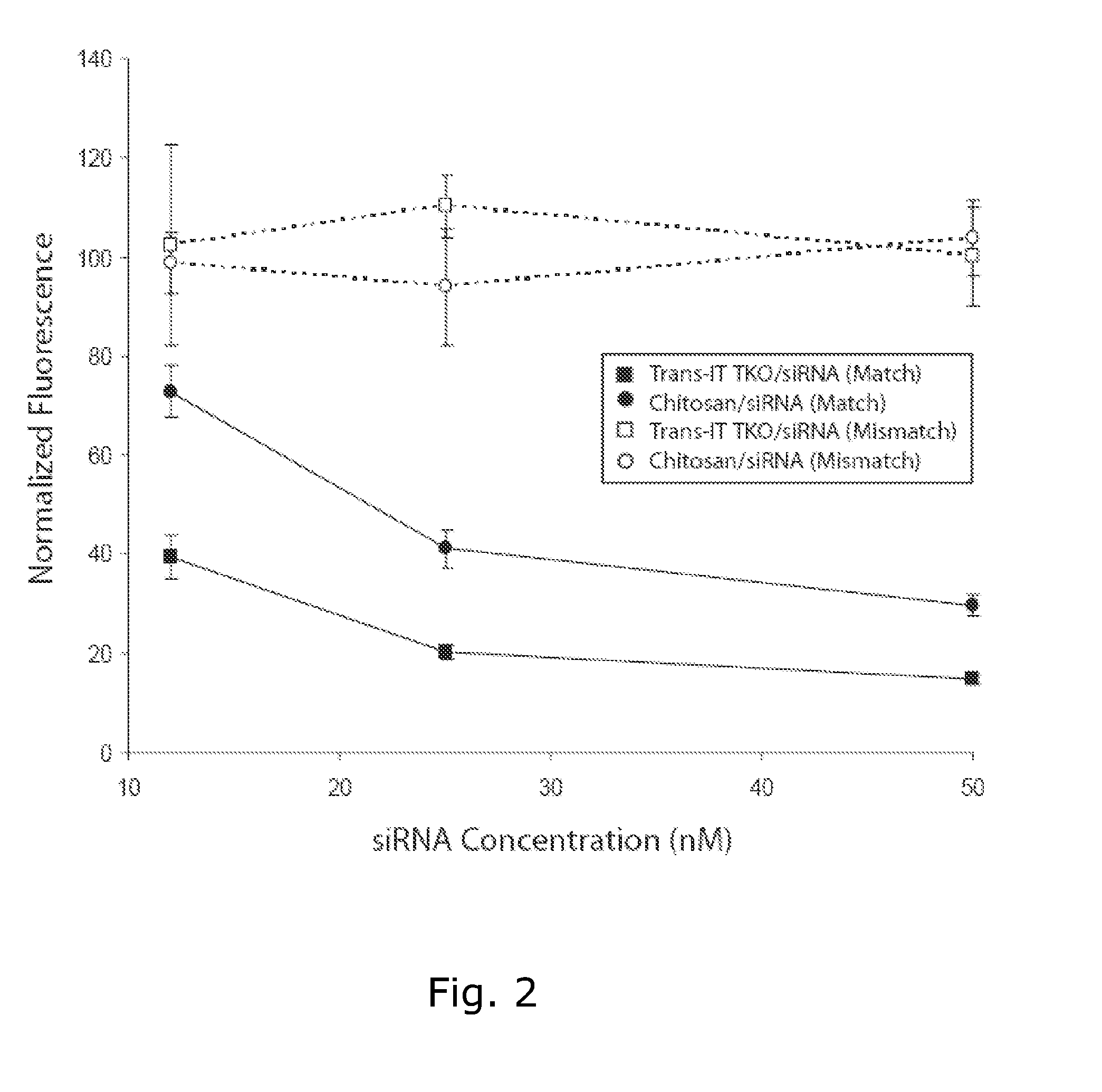Dehydrated chitosan nanoparticles
a technology of chitosan nanoparticles and chitosan, which is applied in the field of dehydration of chitosan nanoparticles, can solve the problems of affecting the obtained effect of aqueous formulations of non-viral complexes
- Summary
- Abstract
- Description
- Claims
- Application Information
AI Technical Summary
Benefits of technology
Problems solved by technology
Method used
Image
Examples
example 1
Introduction
[0076]In this study, we describe a method for producing gene silencing-active lyophilised cationic polymer (chitosan) siRNA formulations. We demonstrate specific and efficient knockdown of Enhanced Green Fluorescent Protein (EGFP) in H1299 human lung carcinoma cells transfected in plates pre-coated with a chitosan / siRNA formulation containing sucrose as lyoprotectant (˜70%). This method removes the necessity for both siRNA reconstitution immediately prior to use and addition onto cells. Furthermore, silencing activity of the plate was maintained in the period studied (˜2 Months) when stored at room temperature.
[0077]Higher cell viability was observed using the chitosan system compared to the lipid formulation. Silencing of the proinflammatory cytokine Tumour Necrosis Factor (TNF-α) was also demonstrated in the RAW macrophage cell line using the lyophilised polymer / siRNA system suggesting that the coating can improve the biocompatibility of medical implants.
[0078]This wor...
example 2
[0102]One ml 0.8 mg / ml chitosan (Mw=100 kDa, DA=80%) solution in 200 mM sodium acetate buffer (pH 5,5) was added 20 μl 100 μM Cy3 labelled siRNA over 1 minute whilst stirring. The stirring was discontinued after 1 hour and 200 μl 60% sucrose was added and the solution mixed with a pipette. Porous poly-ε-caprolactone scaffolds (size=1 mm3), designed for tissue engineering (where are these from?), were immersed completely in this solution for 10 min after which they were frozen at −20° C. for 24 hours and freeze dried at −20° C. and 100 mT for 3 days.
[0103]Scaffolds without (FIG. 5A) and with (FIG. 5B) chitosan / siRNA particles were then visualized with scanning electron microscopy. Comparing scaffolds with and without chitosan / siRNA particles showed that the particles had been deposited on the scaffold walls as a coat covering surface features visible in the scaffold without particles.
[0104]We then added water to a coated scaffold and visualized the scaffold with fluorescence confocal...
example 3
[0107]One ml 800 μg / ml chitosan (Mw=100 kDa, DA=80%) solution in 200 mM sodium acetate buffer (pH 5,5) was added 20 μl 100 μM fluorescently labelled anti RhoA siRNA over 1 minute while stirring. The stirring was discontinued after 1 hour and 200 μl 60% sucrose was added and the solution mixed with a pipette. 7.6 μl of the solution was placed in the middle of wells on 24 well plates. These plates were then frozen at −20° C. for 24 hours and freeze dried at −20° C. and 100 mT for 3 days.
[0108]The plates were then thawed to room temperature for 10 min during which the plate lid was taped onto the plate bottom using standard office tape. The plates were then frozen to −20° C. for 2 days, shipped at room temperature for 1 day and frozen to −20° C. for 3 days. The plates were then used by adding 250 μl complete growth media containing 100000 cells (PC12 cells, Schwann cells and fibroblasts) to each well. After 1 day uptake of the siRNA was evaluated using fluorescence microscopy and phase...
PUM
| Property | Measurement | Unit |
|---|---|---|
| water w/w | aaaaa | aaaaa |
| concentration | aaaaa | aaaaa |
| concentration | aaaaa | aaaaa |
Abstract
Description
Claims
Application Information
 Login to View More
Login to View More - R&D
- Intellectual Property
- Life Sciences
- Materials
- Tech Scout
- Unparalleled Data Quality
- Higher Quality Content
- 60% Fewer Hallucinations
Browse by: Latest US Patents, China's latest patents, Technical Efficacy Thesaurus, Application Domain, Technology Topic, Popular Technical Reports.
© 2025 PatSnap. All rights reserved.Legal|Privacy policy|Modern Slavery Act Transparency Statement|Sitemap|About US| Contact US: help@patsnap.com



